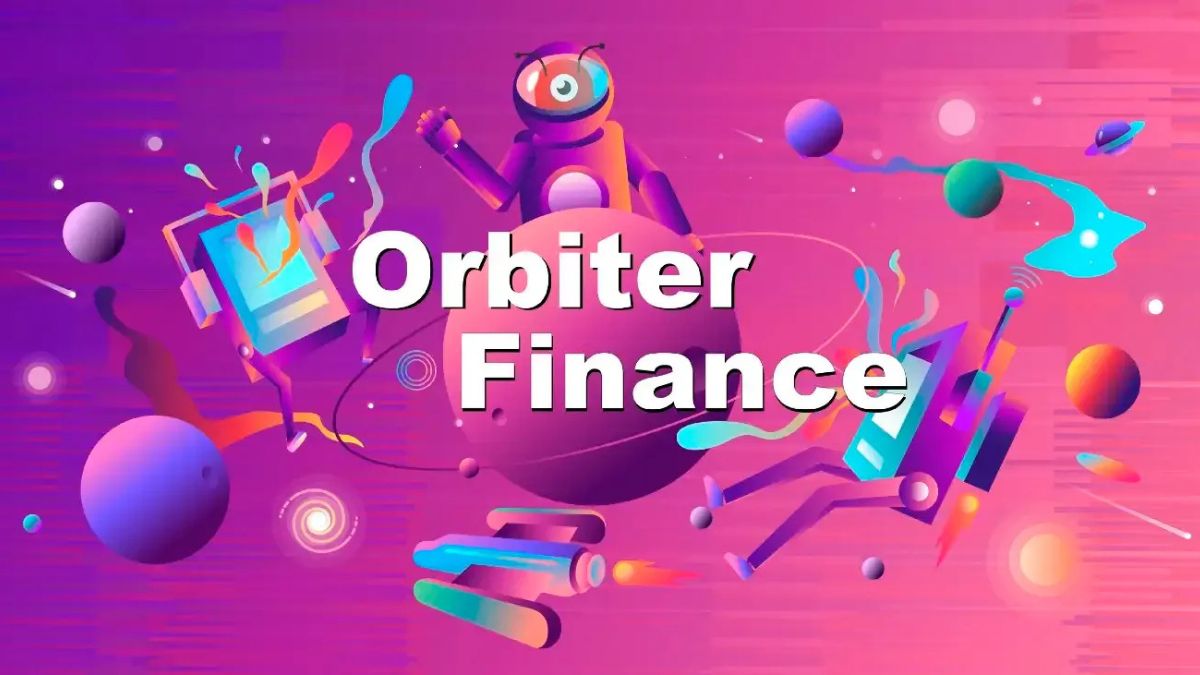The fast-evolving blockchain landscape has resulted in a growing demand for fast, low-cost cross-chain solutions that connect users across various ecosystems. This is where Orbiter Finance stands out. Positioned as a leader in the Layer 2 (L2) rollup ecosystem, Orbiter Finance offers seamless asset transfers and interoperability between blockchains, revolutionizing the way users interact with decentralized finance (DeFi).
If you’ve come across Finance but aren’t sure what it is, how it works, or why it’s making waves in the DeFi space, this is the guide for you. By the end of this post, you’ll understand Finance’s key features, benefits, and its indispensable role in blockchain technology.
What Is Orbiter Finance?
Orbiter Finance is a decentralized protocol designed to bridge crypto assets between Layer 2 rollups and other blockchain ecosystems. Unlike traditional centralized exchanges, Orbiter prioritizes fast, secure, and cost-efficient transactions on a decentralized infrastructure.
At its core, Finance aims to eliminate the complexities and inefficiencies faced by users when moving cryptocurrencies between Layer 1 chains (like Ethereum) and Layer 2 scaling solutions (e.g., Arbitrum, Optimism, zkSync).
These Layer 2 blockchains have proven essential for addressing Ethereum’s scalability issues, but moving assets between them (or to other blockchains entirely) has not been without friction. Orbiter Finance solves this with its “Maker-and-Taker” model for secure bi-directional asset transfers.
Key Features of Orbiter Finance
To understand Orbiter Finance’s growing popularity, it helps to explore the features that make it unique, reliable, and innovative.
1. Cross-Chain Asset Transfers
Orbiter enables secure asset transfers between different blockchain networks by leveraging advanced cryptographic mechanisms. Whether you’re transferring Ethereum between zkSync and Optimism or moving assets to other chains, transactions are completed swiftly and at reduced costs.
2. Decentralized Protocol
Unlike centralized bridges, Orbiter employs a decentralized ecosystem. This eliminates third-party risks and ensures trustless transfers between users and networks.
3. Gas Efficiency
Traditional blockchain bridges can lead to high transaction fees due to high Layer 1 gas costs. Orbiter Finance optimizes transfers, allowing users to benefit from significantly reduced costs on Layer 2 solutions.
4. Maker-and-Taker Model
The Maker-and-Taker mechanism is at the heart of Orbiter’s functionality. This model creates a peer-to-peer network for transferring assets:
- Makers: Makers “provide liquidity” across chains by deploying assets and collateral.
- Takers: Takers are users initiating asset transfers. They benefit from reduced slippage and fast settlement times.
Together, the Maker-and-Taker system facilitates frictionless transactions across multiple ecosystems.
5. Trustless Transactions
Orbiter Finance uses smart contracts to validate and execute transfers. This ensures no single entity can manipulate or interfere with transactions, maintaining the system’s decentralized integrity.
6. Low Latency
Orbiter Finance prides itself on accelerating transaction speeds by optimizing the transfer pipeline. Users can expect fast confirmation times without compromising on security.
Why Is Orbiter Finance Important for DeFi?
The success of DeFi hinges on interoperability between blockchain networks and creating accessible ecosystems for all users. Orbiter Finance addresses vital pain points within blockchain infrastructure, making it critical for long-term scalability.
- Solving Scalability Challenges: Ethereum, despite being the leading blockchain, struggles with high network congestion and gas fees. Orbiter bridges Layer 2 solutions with minimal barriers, empowering users to access lower fees and faster transactions.
- Expanding DeFi Opportunities: By connecting a variety of ecosystems, Orbiter unlocks new financial opportunities. DeFi users can now seamlessly move funds across platforms to maximize yield farming, liquidity staking, or loan opportunities in secondary markets.
- Minimizing Centralized Risk: Traditional centralized exchanges pose a single-point risk of hacks, fraud, or asset loss. Orbiter’s decentralized model creates safer and more transparent financial operations for the crypto community.
- Optimizing Retail and Institutional Use: Whether you’re a casual user sending $50 or an institution transferring millions, Orbiter ensures both use cases are supported with unparalleled efficiency.
- Lowering Entry Barriers for Mass Adoption: Orbiter’s user-friendly interface and gas-saving model make it easier for newcomers to enter the DeFi space, fostering broader adoption of Web3 technology.
How to Use Orbiter Finance
Getting started with Finance is straightforward. Below is a simple step-by-step guide to help you transfer assets across Layer 2 solutions.
Step 1: Connect Your Wallet
Start by accessing Orbiter Finance’s official website (always ensure you’re on the legitimate URL). Use a Web3 wallet like MetaMask, WalletConnect, or similar options to connect with the platform.
Step 2: Select the Source and Destination
On the dashboard, choose the source blockchain (for example, Ethereum Layer 1) and the target Layer 2 or alternative chain (e.g., zkSync, Optimism).
Step 3: Enter the Transfer Amount
Specify the cryptocurrency and amount you’d like to transfer. Orbiter will display the estimated transaction fees and expected delivery time.
Step 4: Execute the Transfer
Confirm the transaction in your wallet. Finance’s protocol will process your request, and you should see the funds in your destination wallet shortly.
Step 5: Check Transaction Status
Orbiter allows users to track transfer progress in real-time, ensuring transparency throughout the process.
Examples of Use Cases for Orbiter Finance
Orbiter Finance simplifies blockchain interactions, opening the door for various real-world use cases. Here are some examples:
- Yield Farming Across Platforms: DeFi users can use Finance to swiftly move funds between ecosystems in pursuit of better yield rates or profitable farming opportunities.
- Gaming and NFTs: With the rise of Layer 2 solutions for blockchain gaming and NFT transactions, Orbiter allows players to easily move assets between game ecosystems or Layer 1 chains where marketplaces reside.
- Cross-Ecosystem Arbitrage: Traders can capitalize on arbitrage opportunities by transferring tokens quickly between ecosystems, ensuring minimal delays and competitive fees.
- Institutional Transfers: For firms managing diverse portfolios across chains, Finance offers reliability and efficiency in balancing funds between projects.
The Future of Orbiter Finance
As the blockchain and DeFi landscapes continue to mature, Orbiter Finance is positioned to remain a critical enabler for cross-chain transactions. With more Layer 2 rollups and Ethereum-compatible networks on the rise, Orbiter is expected to expand its ecosystem and provide additional integrations for users.
Exciting developments, such as multi-token functionality, liquidity incentives for Makers, and enhanced governance models, are already on the horizon.
Simplify Cross-Chain Transfers with Orbiter Finance
At its heart, Finance exemplifies the spirit of Web3 innovation. By removing friction from asset transfers and empowering decentralized solutions, it plays a pivotal role in shaping the future of blockchain technology.
Whether you’re a casual DeFi user or a high-frequency trader, Orbiter Finance offers endless opportunities to optimize, save, and explore.
Are you ready to experience seamless cross-chain transactions?
FAQs
What is Orbiter Finance?
Orbiter Finance is a cross-rollup bridge solution designed to enable fast and efficient transfers of assets across Layer 2 networks and Ethereum-compatible chains. It simplifies the process of cross-chain transactions for users in the blockchain ecosystem.
How does Orbiter Finance ensure security?
Orbiter implements robust cryptographic protocols and decentralized mechanisms to safeguard user funds. By leveraging the security of Ethereum Layer 1 and the advanced designs of Layer 2 rollups, it minimizes risks and ensures trustless operations.
Which networks are supported by Orbiter Finance?
Currently, Orbiter Finance supports various Layer 2 networks and Ethereum-compatible blockchains, such as Optimism, Arbitrum, zkSync, and Polygon. This list continues to expand as new integrations are added to the ecosystem.
Are there fees for using Orbiter Finance?
Yes, there are low transaction fees, which include the gas required for the transfer and a small protocol fee. These fees are designed to remain competitive and transparent for users.
How can I get started with Orbiter Finance?
Getting started is simple! Connect your crypto wallet to the Orbiter Finance app, select your desired source and destination networks, enter the transfer amount, and confirm the transaction. The cross-chain transfer will be processed within minutes.









